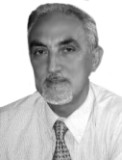HealthManagement, Volume 22 - Issue 5, 2022
Given the proven increase in exposure to ionising radiation by over 600% (diagnostic bulimia) it would not only be wise but also necessary to reduce the unjustified radiation risk due to inappropriate diagnostic investigations, by the following sustainable measure
- revise the diagnostic reference levels for CT, interventional and paediatric radiology;
- renew obsolete radiology instruments and provide the quantification of dose in each report;
- implement lifelong learning at any level, starting from general practitioners and paediatricians;
- launch systematic communication campaigns to increase citizens’ awareness on the potentially harmful exposure to radiation in biomedical imaging exams.
Key Points
- Over the years, the advancement of imaging tools and techniques, along with very significant improvements in the diagnosis of different pathophysiological conditions, has been accompanied by an increase in exposure to ionising radiation, even at low-dose.
- In the case of radiological procedures, the first question to be asked is whether there are alternative methods that do not emit ionising radiation (such as ultrasound or magnetic resonance imaging) that can answer the same clinical questions.
- Numerous studies have shown that the principle of justification and precaution is not followed scrupulously and that between 20 to 50% of medical imaging examinations are considered inappropriate.
- One of the reasons of diagnostic bulimia is a lack of information about radiation risk.
Present Scenario of Radiation Exposure
Over the years, the advancement of imaging tools and techniques, along with very significant improvements in the diagnosis of different pathophysiological conditions, has been accompanied by an increase in exposure to ionising radiation, even at low-dose (Narasimhamurthy et al. 2022).
In particular, the use of computed tomography (CT) in emergency departments has skyrocketed over several decades, as physicians increasingly depend on imaging for more refined diagnoses. Therefore, both patients and medical personnel are put at risk due to the frequent exposure to and higher levels of radiation (Azman et al. 2019).
As a result of the changes in use of imaging procedures that rely on ionising radiation, it has been estimated that the collective dose has increased by over 700%, and the annual per-capita dose by almost 600% in recent years (Gerber et al. 2009). No wonder someone has referred to this phenomenon as “diagnostic bulimia”.
Late-onset effects of exposure to ionising radiation on the human body have been identified by long-term, large-scale epidemiological studies. The cohort study of Japanese survivors of the atomic bombings of Hiroshima and Nagasaki (the Life Span Study) is thought to be the most reliable source of information about these health effects because of the size of the cohort, the exposure of a general population of both sexes and all ages, and the wide range of individually assessed doses. Radiation exposure increases the risk of cancer throughout life. At high doses, and possibly also at low doses, radiation might increase the risk of cardiovascular disease and some other non-cancer diseases (Kamiya et al. 2015).
In the case of radiological procedures, the first question to be asked is whether there are alternative methods that do not emit ionising radiation (such as ultrasound or magnetic resonance imaging), that can answer the same clinical questions. If this is not possible, it is then necessary to assess the risk-benefit ratio for the patient in the use of radiation-emitting technologies. The choice of a diagnostic method must in fact provide for the evaluation of the risk-benefit ratio based on diagnostic appropriateness.
From a regulatory point of view, in Italy these concepts were already clearly expressed by Legislative Decree 187/2000 which transposed Directive 99/43/Euratom. Today these concepts have been made even more stringent by Legislative Decree 31 July 2020, n. 101, in implementation of Directive 59/2013, published on 17 January 2014 in the Official Journal of the European Union, which establishes the fundamental safety standards relating to protection against the dangers deriving from exposure to ionising radiation, and which repeals all previous Legislative Decrees on the subject. The Directive recalls that, according to the World Health Organization, the concept of health should refer to the physical, mental and social well-being of the person and not only to the absence of diseases or infirmities. In the recent Legislative Decree 101/2020, Article 157, paragraph 1 states that “unjustified exposure is prohibited” (Council Directive 1997; Council Directive 2013; Decreto Legislativo 2020).
Despite this directive, numerous studies have shown that the principle of justification and precaution is not followed scrupulously and that between 20 to 50% of medical imaging examinations are considered inappropriate (Al-Mallah et al. 2017). Radiological examinations that do not meet diagnostic appropriateness criteria are almost a third of all investigations performed (Picano 2009; Herzog and Rieger 2004; Rehani et al. 2020).
As the latest European data show, the exposure of patients to inappropriate diagnostic investigations, in addition to exposing patients to an unjustified risk, produces an increase in public health costs and a concomitant growth in waiting lists for the same radiological procedures.
In the public facilities of Puglia (data July 2021), for example, the waiting lists for urgent diagnostic tests are very long - Abdominal CT: 15 bookings and only 2 examinations done within 3 days (13.33%); Skull CT: 61 bookings and only 8 examinations done within 3 days (13.11%).
One of the reasons of diagnostic bulimia is a lack of information about radiation risk. Physician awareness of the risks of ionising radiation exposure related to medical imaging is poor. Effective educational interventions informing physicians of such risk, especially in emergency medicine (EM), are lacking (Sheng et al. 2016).
In a study conducted in 2004 in an American hospital, only 27.5% of doctors who were subjected to a questionnaire on dosimetry topics were able to obtain a score above 45%; in addition, 28% and 10% of the doctors who participated in the test believed that both MRI and ultrasound made use of ionising radiation (Jacob et al. 2004).
Of course, there is also a lack of information about radiation risk provided to the patients prior to the diagnostic procedure. Efforts should be made to ensure that patients receiving multiple medical imaging tests are aware of the radiation they are receiving (Alawad and Abujamea 2021).
In Italy a study was conducted in 2019 to assess patients’ knowledge about medical radiation and related risks. Among 3039 patients invited to participate, the response rate was 94.3% (n = 2866). Participants included 1531 women (53.4%); mean (SD) age was 44.9 (17.3) years. Of the 2866 participants, 1529 (53.3%) were aware of the existence of natural sources of ionising radiation. Mammography (1101 [38.4%]) and magnetic resonance imaging (1231 [43.0%]) were categorised as radiation-based imaging modalities. More than half of the 2866 patients (1579 [55.1%]; P = .03) did not know that chest computed tomography delivers a larger dose of radiation than chest radiography, and only 1499 (52.3%) knew that radiation can be emitted after nuclear medicine examinations (P = .004). A total of 667 patients (23.3%) believed that radiation risks were unrelated to age, 1273 (44.4%) deemed their knowledge about radiation risks inadequate, and 2305 (80.4%) preferred to be informed about radiation risks by medical staff (Bastiani et al. 2021).
The Need for Action
With these premises, precisely to promote the implementation of Legislative Decree 101/2020 and safeguard the health of citizens, in Puglia (Italy) a project called “Ionizing Radiation in Territorial Medicine” coordinated by ISBEM and the Department of Innovation Engineering of the University of Salento started in July 2022.
Design and methods
The above designed project - which will last 18 months – aims:
- To suggest with priority the updating and revision of the Diagnostic Reference Levels (DRLs), especially for CT, interventional radiology and paediatric radiology. This activity aims to respect the principle of optimisation, which was once summarised in the radiological field with the acronym ALARA (as low as reasonably achievable), but which - with Legislative Decree 101/2020 - takes on a much broader meaning. In fact, this principle not only provides that every radiological procedure that uses ionising radiation is performed with the lowest possible dose of radiation such as to allow the radiologist to answer a specific clinical question, but, as stated in Article 158 of the aforementioned Legislative Decree, it is necessary that “optimisation” includes the choice of medical radiological equipment, the production of appropriate diagnostic information or therapeutic outcome, practical aspects of medical radiological procedures, as well as quality assurance programmes, including quality control, examination and evaluation of doses or activities administered to the patient.
- To carry out an inventory of diagnostic equipment in territorial medicine, to encourage the renewal of the instruments installed in radiology, counteracting their widespread obsolescence. The inclusion of the dose on the report, provided by the new devices, will facilitate a constant verification of the quality of the processes in radiology. In fact, the fulfillment of the norm, with the highlighting of the dose data in the report, will strengthen the habit of systematically controlling the dosimetric behaviours of all operators, avoiding the occurrence of clinically unjustified dose variability.
- To design training courses and continuously update both in the university environment and for general practitioners and paediatricians. When clinicians were made aware of the risks from high-dosage CT radiation, there was a significant (>50%) reduction in scan requests (Gimbel et al. 2013). Radiologists should be taking the lead in educating their colleagues, residents, technologists, nurses, and patients to help close the knowledge gap.
- To carry out a campaign to raise awareness of citizenship with dedicated information events.
Conclusion
Over the years, the advancement of imaging tools and techniques has been accompanied by an increase in exposure to ionising radiation, even at low-dose. To protect patients and to avoid unjustified radiation risk it would be advisable:
- to update the Diagnostic Reference Levels, especially for CT, interventional radiology and paediatric radiology.
- to renew the radiological equipment.
- to design training courses and life-long learning both in the university environment and at general practitioners and pediatricians.
- to carry out campaigns to raise awareness of citizenship with dedicated information events.
Acknowledgement
The authors express their gratitude to Teodoro Zaccaria, administrator, Valerio Pantile, ICT Tech and Domenico Argentiero, ICT Tech, who are staff members of ISBEM (Euro Mediterranean Scientific Biomedical Institute) in Mesagne, Italy. Moreover, they acknowledge the crucial role of Massimo Martinelli, ICT Tech of CNR-ISTI of San Cataldo Science Park of Pisa and the intellectual guidance of Professor Davide Caramella, whose vision on the proper use of x-ray inspired this paper.
Conflict of Interest
None.
References:
Al-Mallah A, Vaithinathan AG, Al-Sehlawi M, Al-Mannai M (2017) Awareness and Knowledge of Ionizing Radiation Risks Between Prescribed and Self-Presenting Patients for Common Diagnostic Radiological Procedures in Bahrain. Oman Med J. 32(5):371-377.
Alawad S, Abujamea A (2021) Awareness of radiation hazards in patients attending radiology departments. Radiat Environ Biophys. 60(3):453-458.
Azman RR, Shah MN, Ng KH (2019) Radiation Safety in Emergency Medicine: Balancing the Benefits and Risks. Korean J Radiol. 20(3):399-404.
Bastiani L, Paolicchi F, Faggioni L et al. (2021) Patient Perceptions and Knowledge of Ionizing Radiation From Medical Imaging. JAMA Netw Open. 4(10):e2128561.
Council Directive (1997) 97/43/Euratom of 30 June 1997 on health protection of individuals against the dangers of ionizing radiation in relation to medical exposure, and repealing Directive 84/466/EURATOM. Official Journal L-180 of 09.07.1997, 22.
Council Directive (2013) 2013/59/Euratom of 5 December 2013 laying down basic safety standards for protection against the dangers arising from exposure to ionising radiation, and repealing Directives 89/618/ Euratom, 90/641/Euratom, 96/29/Euratom, 97/43/Euratom and 2003/122/Euratom. Official Journal L-13 of 17 January 2014.
Decreto Legislativo (2020) 31 luglio 2020, n°201, pubblicato sulla Gazzetta Ufficiale della Repupplica Italiana il 12 agosto 2020.
Gerber TC, Kantor B, McCollough CH (2009) Radiation dose and safety in cardiac computed tomography. Cardiol Clin. 27(4):665-77.
Gimbel RW, Fontelo P, Stephens MB et al. (2013) Radiation exposure and cost influence physician medical image decision making: a randomized controlled trial. Med Care. 51(7):628-32.
Herzog C, Rieger CT (2004) Risk of cancer from diagnostic X-rays. Lancet. 363:340–341.
Jacob K, Vivian G, Steel JR (2004) X-ray dose training: are we exposed to enough? Clin Radiol. 59(10):928-34.
Kamiya K, Ozasa K, Akiba S et al. (2015) Long-term effects of radiation exposure on health. Lancet. 386(9992):469-78.
Narasimhamurthy RK, Mumbrekar KD, Satish Rao BS (2022) Effects of low dose ionizing radiation on the brain- a functional, cellular, and molecular perspective. Toxicology. 465:153030.
Picano E (2009) The Risks of Inappropriateness in Cardiac Imaging. Int J Environ Res Public Health. 6(5):1649-1664.
Rehani MM, Melick ER, Alvi RM et al. (2020) Patients undergoing recurrent CT exams: assessment of patients with non-malignant diseases, reasons for imaging and imaging appropriateness. European Radiology. 30(4):1839-1846.
Sheng AY, Breaud AH, Schneider JI (2016) Interactive Learning Module Improves Resident Knowledge of Risks of Ionizing Radiation Exposure From Medical Imaging. Curr Probl Diagn Radiol. 45(4):258-64.










